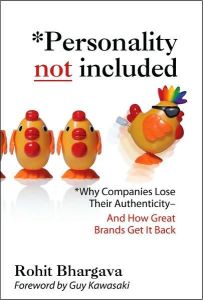Join getAbstract to access the summary!

Join getAbstract to access the summary!
Rohit Bhargava
Personality not included
Why Companies Lose Their Authenticity – And How Great Brands Get it Back
McGraw-Hill, 2008
What's inside?
A step-by-step tour of the moves a marketer can make to forge a winning, selling personality for any company.
Recommendation
Author Rohit Bhargava pushes for companies to use social media and an array of other marketing tools to develop sales-boosting corporate or brand personalities and regain their “authenticity.” He presents a step-by-step plan for creating a distinctive, compelling corporate personality, from friendly employees to a unique brand identity. Some of his case studies of exemplary corporate personalities could be stronger and more unified, but Bhargava is well-informed and encouraging. He splits the book into two sections. The longer first section explains various approaches to distinctive branding. The second outlines 10 marketing tactics, and provides a “guides and tools” implementation appendix for each chapter. getAbstract welcomes this useful battle plan for marketers who want to give their products consumer-friendly personalities – not just for promotion, but for sales appeal.
Summary
About the Author
Rohit Bhargava is senior vice president of Digital Strategy, a marketing consulting company, and a founding member of the 360 Digital Influence group at Ogilvy Public Relations. He writes the Influential Marketing blog.

















Comment on this summary